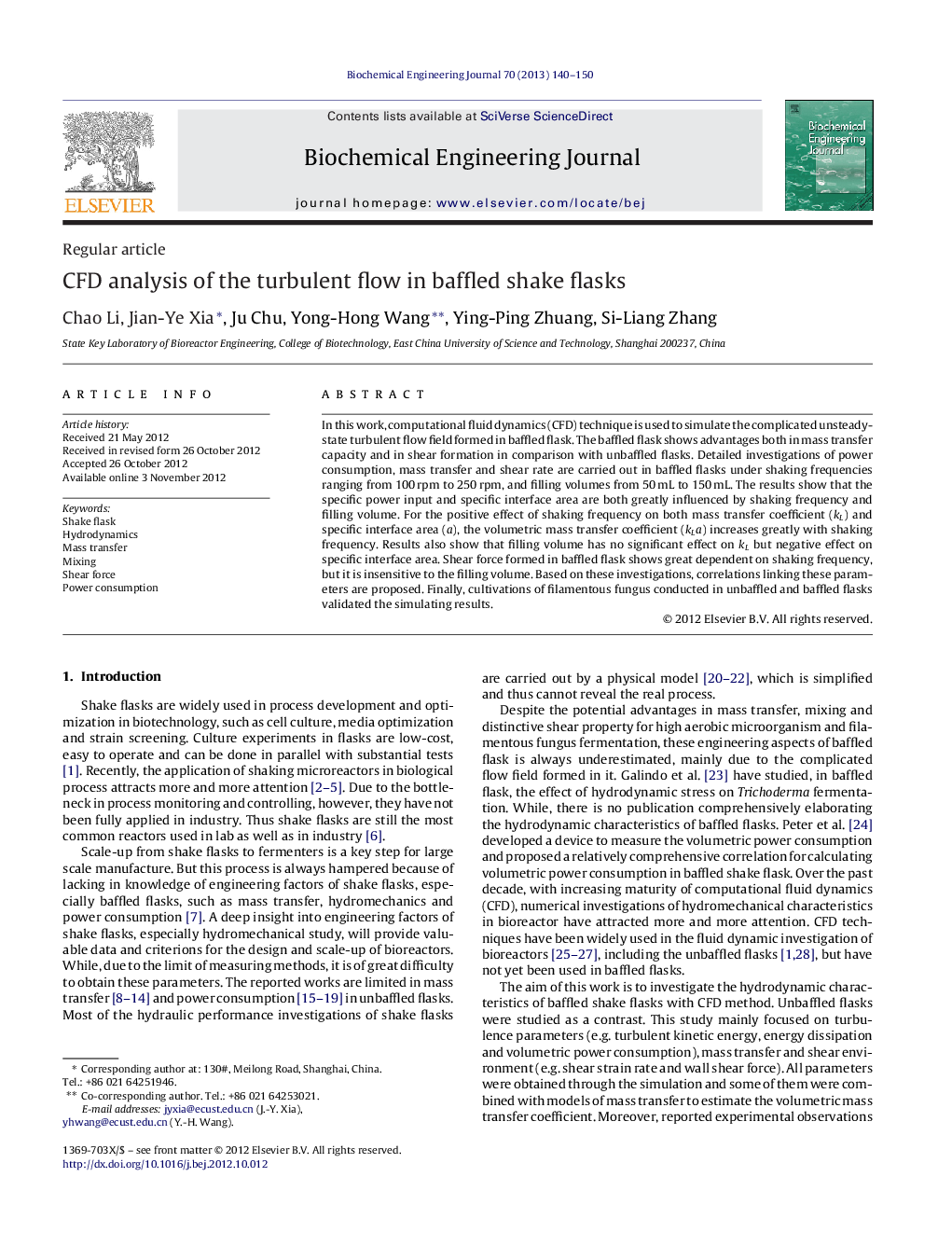| Article ID | Journal | Published Year | Pages | File Type |
|---|---|---|---|---|
| 3453 | Biochemical Engineering Journal | 2013 | 11 Pages |
In this work, computational fluid dynamics (CFD) technique is used to simulate the complicated unsteady-state turbulent flow field formed in baffled flask. The baffled flask shows advantages both in mass transfer capacity and in shear formation in comparison with unbaffled flasks. Detailed investigations of power consumption, mass transfer and shear rate are carried out in baffled flasks under shaking frequencies ranging from 100 rpm to 250 rpm, and filling volumes from 50 mL to 150 mL. The results show that the specific power input and specific interface area are both greatly influenced by shaking frequency and filling volume. For the positive effect of shaking frequency on both mass transfer coefficient (kL) and specific interface area (a), the volumetric mass transfer coefficient (kLa) increases greatly with shaking frequency. Results also show that filling volume has no significant effect on kL but negative effect on specific interface area. Shear force formed in baffled flask shows great dependent on shaking frequency, but it is insensitive to the filling volume. Based on these investigations, correlations linking these parameters are proposed. Finally, cultivations of filamentous fungus conducted in unbaffled and baffled flasks validated the simulating results.
► CFD method was used to simulate the flow field in baffled flaks for the first time. ► Mass transfer and shear environment in baffled flasks were studied comprehensively. ► A new model was used to describe the flask movement. ► Cultivation of filamentous fungus was conducted to validate the simulating results.
